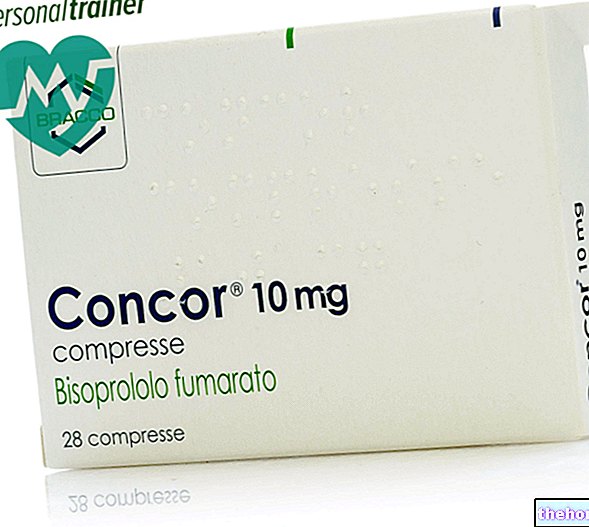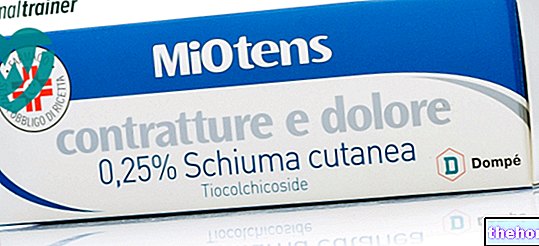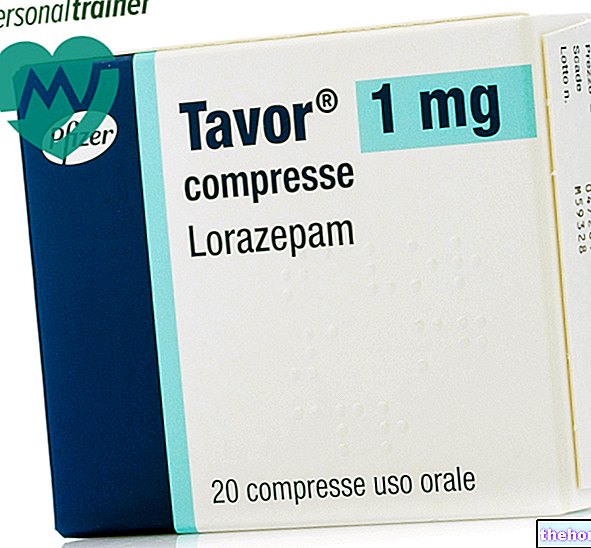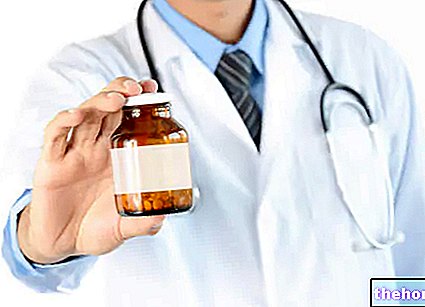Active ingredients: Norfloxacin
Noroxin 400mg Film Coated Tablets
Source Package Leaflet: AIFA (Italian Medicines Agency). Content published in January 2016. The information present may not be up-to-date.
To have access to the most up-to-date version, it is advisable to access the AIFA (Italian Medicines Agency) website. Disclaimer and useful information.
01.0 NAME OF THE MEDICINAL PRODUCT
NOROXIN 400 MG TABLETS COATED WITH FILM
02.0 QUALITATIVE AND QUANTITATIVE COMPOSITION
Each film-coated tablet contains:
Active ingredient: Norfloxacina 400 mg
For the full list of excipients, see section 6.1
03.0 PHARMACEUTICAL FORM
Film-coated tablets.
04.0 CLINICAL INFORMATION
04.1 Therapeutic indications
NOROXIN is indicated for the treatment of infections of the upper and lower urinary tract (cystitis, pyelitis, cystopyelitis), caused by bacteria sensitive to NOROXIN.
Infections caused by multi-resistant pathogenic microorganisms have been successfully treated with usual doses of NOROXIN.
04.2 Posology and method of administration
NOROXIN should be taken with a glass of water, one hour before or two hours after a meal or ingestion of milk.
In the treatment of urinary tract infections, the usual dosage for adults is 400 mg twice a day for 7-10 days.
In women with uncomplicated acute cystitis, a therapy of 3-7 days has been shown to be effective.
The sensitivity of the causative agent to NOROXIN must be tested, but therapy with NOROXIN may be started before the results of these tests are obtained.
For dosage in patients with renal insufficiency see 4.4.
Pediatric use
In children, safety and efficacy have not been established (see 4.3).
04.3 Contraindications
NOROXIN is contraindicated in patients with hypersensitivity to the active substance, to any of the excipients, or to other quinolone antibacterial agents.
Pregnancy and lactation (see 4.6).
Safety and efficacy in children have not been verified, therefore norfloxacin should not be given to children before pubertal age or to boys with incomplete skeletal development.
As with other organic acids, NOROXIN should not be used in individuals with a history of seizures or known predisposing factors for seizures (see 4.8).
Previous fluoroquinolone tendinopathies.
04.4 Special warnings and appropriate precautions for use
NOROXIN is used in the treatment of urinary tract infections including in patients with renal insufficiency. Since NOROXIN is mainly excreted via the kidney, severe renal impairment can significantly alter urinary levels. In those with a creatinine clearance of less than 30 ml / min / 1.73 m2 the recommended dosage is 1 tablet of 400 mg per day. At this dosage the urinary concentration is above the MIC of most pathogens sensitive to NOROXIN.
Sufficient fluid intake is recommended during treatment to avoid crystalluria.
Photosensitivity reactions with excessive exposure to the sun have been observed in patients treated with some drugs of this class. Excessive exposure to the sun should be avoided and drug administration should be discontinued if photosensitivity occurs.
In sporadic cases, inflammation and injury with tendon rupture can occur during therapy with fluoroquinolones. In the event of symptoms of tendonitis and / or rupture of tendons, treatment with NOROXIN must be discontinued immediately and the patient must be advised to contact the doctor for appropriate therapeutic measures. Predisposing factors for tendinitis are age over 60 years, intense exercise, long-term treatment with corticosteroids, early walking of patients in bed.
In rare cases, haemolytic reactions have been reported in patients with "latent or actual alteration of" glucose-6-phosphate dehydrogenase activity (see 4.8).
Quinolones, including norfloxacin, can exacerbate the signs of myasthenia gravis and lead to life-threatening weakening of the respiratory muscles. Caution should be exercised in the use of quinolones, including NOROXIN, in patients with myasthenia gravis (see 4.8).
Some quinolones have been associated with QT prolongation on electrocardiography and with infrequent cases of arrhythmia. Extremely rare cases of torsades de pointes have been reported during post-marketing surveillance in patients treated with norfloxacin. These reports have generally involved patients with other concomitant diseases and the causal relationship with the intake of norfloxacin has not been established. The risk of arrhythmias with drugs known to induce QT prolongation can be reduced by avoiding their use in the presence of hypokalaemia, significant bradycardia or concomitant therapy with antiarrhythmic drugs belonging to classes Ia and III. Quinolones must also be used with caution in patients taking cisapride, erythromycin, antipsychotics, tricyclic antidepressants or have any type of positive personal or family history for QT prolongation.
Pseudomembranous colitis has been reported with nearly all antibacterial agents including NOROXIN, and can range in severity from mild to life-threatening. It is therefore important to consider this diagnosis in patients who present with diarrhea following the administration of antibacterial agents. Studies indicate that the primary cause of "antibiotic-associated colitis" is a toxin produced by Clostridium difficile.
In case of suspicion or confirmation of antibiotic-associated colitis from Clostridium difficile ongoing antibiotic therapy not directed against may need to be stopped Clostridium difficile. An appropriate management of the hydroelectrolytic balance, an integration of the protein intake, an antibiotic treatment of Clostridium difficile, and a surgical evaluation according to the clinical indication.
04.5 Interactions with other medicinal products and other forms of interaction
Co-administration of probenecid does not alter the serum concentrations of NOROXIN, but urinary excretion of this drug decreases.
As with other organic acids with antibacterial activity, it has proven itself in vitro antagonism between NOROXIN and nitrofurantoin.
Quinolones, including norfloxacin, have been shown to inhibit CYP1A2 in vitro. Concomitant use with drugs metabolised by CYP1A2 (eg, caffeine, clozapine, ropinirole, tacrine, theophylline, tizanidine) may result in increased concentrations of substrate drugs when administered at their usual dosages. Patients taking either any of these drugs concomitantly with norfloxacin should be carefully monitored.
Increases in plasma levels of theophylline have been reported with concomitant use of quinolones. There have been rare reports of theophylline-related side effects in patients receiving concomitant therapy with norfloxacin and theophylline. Consequently, monitoring of plasma levels should be considered. of theophylline and, if necessary, a dosage adjustment.
Increases in serum levels of cyclosporine have been reported with concomitant use of norfloxacin. Therefore, when these drugs are used concomitantly, serum levels of cyclosporine should be monitored and the dosage of this drug adjusted appropriately.
Quinolones, including norfloxacin, may enhance the effects of oral anticoagulants including warfarin or its derivatives and fluindione or similar drugs. When these products are administered concomitantly with quinolones, prothrombin time or other appropriate coagulation tests should be carefully monitored.
Concomitant administration of quinolones including norfloxacin with glyburide (a sulphonylurea) has in very rare cases resulted in the onset of severe hypoglycaemia. Therefore, monitoring of blood glucose is recommended in the event of concomitant administration of the two drugs.
Polyvitamin preparations, products containing iron or zinc, antacids, sucralfate or didanosine should not be administered simultaneously and within 2 hours after the administration of norfloxacin, as they can interfere with the absorption, reducing the serum and urinary levels of norfloxacin.
Didanosine in chewable / buffered tablets or powder for pediatric use should not be administered concomitantly with or within 2 hours of norfloxacin use, as these products may interfere with absorption causing a lowering of serum and urinary levels of norfloxacin. .
Some quinolones, including norfloxacin, have also been shown to interfere with the metabolism of caffeine. This can lead to a reduction in caffeine clearance and a prolongation of the plasma half-life which can lead to the accumulation of caffeine in the plasma when products containing caffeine are consumed during treatment with norfloxacin.
Concomitant administration of a non-steroidal anti-inflammatory drug (NSAID) with a quinolone, including norfloxacin, may increase the risk of CNS stimulation and seizure episodes. NOROXIN should therefore be used with caution in patients on concomitant therapy with NSAIDs.
Data from animal studies have shown that quinolones in combination with fenbufen can cause seizures; consequently, concomitant administration of quinolones and phenbufen should be avoided.
04.6 Pregnancy and lactation
Pregnancy
NOROXIN was found in umbilical cord blood and amniotic fluid; consequently NOROXIN should not be used in pregnancy.
Feeding time
NOROXIN has been found in breast milk; consequently NOROXIN should not be used during breastfeeding.
04.7 Effects on ability to drive and use machines
Norfloxacin can cause dizziness and lightheadedness and, therefore, patients should know how they react to norfloxacin before engaging in activities that require integrity of alertness and coordination such as driving cars or operating machinery.
04.8 Undesirable effects
In clinical studies, NOROXIN was evaluated for safety in approximately 2,900 individuals.
The following undesirable effects have been reported during clinical trials or with post-marketing experience:
[Common (≥ 1/100,
rare (
Infections and infestations:
Uncommon: vaginal candidiasis.
Disorders of the blood and lymphatic system:
Uncommon: eosinophilia, leukopenia, neutropenia.
Rare: thrombocytopenia.
Very rare: agranulocytosis, haemolytic anemia, sometimes associated with glucose-6-phosphate dehydrogenase deficiency.
Immune system disorders:
Very rare: hypersensitivity reactions, anaphylaxis.
Metabolism and nutrition disorders:
Uncommon: anorexia.
Psychiatric disorders:
Uncommon: depression, sleep disturbances.
Rare: disorientation, nervousness, irritability, anxiety, euphoria, hallucinations, mental disorders, confusion.
Very rare: psychotic reactions, disorientation.
Nervous system disorders:
Uncommon: headache, dizziness, paraesthesia, hypoesthesia, dysgeusia.
Rare: tremor.
Very rare: polyneuropathy, Guillain-Barrè syndrome, convulsions, myoclonus, exacerbation of myasthenia gravis.
Eye disorders:
Rare: epiphora, visual disturbances.
Ear and labyrinth disorders:
Rare: tinnitus.
Very rare: hearing loss.
Vascular disorders:
Very rare: vasculitis.
Respiratory, thoracic and mediastinal disorders:
Rare: dyspnoea.
Gastrointestinal disorders:
Common: nausea, dyspepsia, constipation, flatulence, gastralgia.
Uncommon: diarrhea, abdominal pain / cramps, heartburn.
Rare: pancreatitis.
Very rare: dry mouth, vomiting.
Hepatobiliary disorders:
Rare: jaundice.
Very rare: hepatitis, cholestatic jaundice.
Skin and subcutaneous tissue disorders:
Uncommon: rash, pruritus, urticaria.
Rare: photosensitivity.
Very rare: erythema multiforme, Stevens-Johnson syndrome, exfoliative dermatitis, toxic epidermal necrolysis, angioedema.
Musculoskeletal and connective tissue disorders:
Rare: arthralgia, myalgia.
Very rare: tendonitis, arthritis.
Renal and urinary disorders:
Very rare: interstitial nephritis, renal failure.
General disorders and administration site conditions:
Common: tiredness.
Very rare: fever.
Diagnostic tests:
Common: ALT increased (SGPT), AST increased (SGOT).
Rare: increased blood urea and creatinine, decreased hematocrit.
Very rare: creatine kinase (CK) increased.
Injury, poisoning and procedural complications:
Very rare: tendon rupture.
Pseudomembranous colitis has also been reported in post-marketing experience.
Serious anaphylactoid reactions are possible with the use of the product (edema of the tongue, edema of the glottis, dyspnoea, arterial hypotension up to dangerous shock).
04.9 Overdose
No specific information is available on the treatment of NOROXIN overdose.
Adequate hydration must be maintained.
05.0 PHARMACOLOGICAL PROPERTIES
05.1 Pharmacodynamic properties
Pharmacotherapeutic group: Quinolone antibacterials for systemic use, fluoroquinolones
ATC code: J01MA06
Norfloxacin is an antibacterial organic acid, chemically described as 1-ethyl-6-fluoro-1,4-dihydro-4-oxo-7- (1-piperazinyl) -3-quinolin carboxylic acid.
Norfloxacin possesses a broad spectrum of antimicrobial action against gram-positive and gram-negative aerobic bacteria. The fluorine atom in position 6 provides an increase in potency against gram-negative microorganisms and the piperazine ring in position 7 is responsible of the activity against the Pseudomonas.
Norfloxacin is generally active against microorganisms that are resistant to nalidixic, oxolinic and pipemidic acids, cinoxacin and flumechin.
There is no cross-resistance between norfloxacin and structurally unrelated antibacterial agents, such as penicillins, cephalosporins, tetracyclines, macrolides, aminoglycosides and sulfonamides, 2,4 diaminopyrimidines and their combinations (e.g., co-trimoxazole ).
Analysis of the overall clinical experience with NOROXIN revealed a strong correlation between the results of the sensitivity tests conducted in vitro and the clinical and bacteriological efficacy of the drug in humans.
NOROXIN is active in vitro against the following bacteria found in urinary tract infections:
* MIC Breakpoint is not defined for EUCAST.
05.2 Pharmacokinetic properties
NOROXIN is rapidly absorbed after oral administration. The mean serum half-life is approximately 3-4 hours and is not dose-dependent.
Absorption of norfloxacin after 400 mg doses is 30-40%, with serum concentrations of 1.5 mcg / ml, while urinary concentrations reach mean values of 200 mcg / ml or more in healthy volunteers and remain at levels bactericidal (30 mcg / ml) for at least 12 hours.
In healthy elderly volunteers (65-75 years with normal renal function for their age) norfloxacin is eliminated more slowly due to their slightly decreased renal function. Absorption of the drug does not appear to be impaired; however, the effective half-life of norfloxacin in these elderly subjects is 4 hours.
Following a single dose of norfloxacin, drug availability in patients with creatinine clearance greater than 30 ml / min / 1.73 m2 is similar to that of healthy volunteers. In patients with creatinine clearance below 30 ml / min / 1.73 m2 the renal elimination of norfloxacin is significantly decreased and the effective serum half-life is approximately 8 hours. Absorption of the drug does not appear to be affected by decreased renal function.
NOROXIN is eliminated by both renal and biliary routes. In the first 24 hours, 33-48% of the drug is found in the urine both in free and metabolized form. Over 70% of urinary excretion concerns the unchanged substance; the bactericidal activity of the substance is not affected by the urinary pH. The protein binding is less than 15%.
05.3 Preclinical safety data
Animal toxicology
No significant mortality was observed in male and female mice and rats up to single oral doses of 4 g / kg.
NOROXIN, when administered to 3-5 month old dogs at doses 4 or more times higher than the dose usually used in humans, caused the formation of a vesicle and possibly an erosion at the level of the cartilage of the joints subject to greater load. Similar changes were caused by other structurally related drugs. Dogs 6 months of age or older did not report these changes.
Development and Reproduction Toxicity
Teratological studies in mice and rats and fertility studies in mice at oral doses 30-50 times the usual human dose did not reveal any teratogenic or toxic effects on the fetus. Embryotoxicity was observed in rabbits at doses of 100 mg / kg. This was secondary to maternal toxicity and represents a non-specific antimicrobial effect that occurs in the rabbit due to its atypical sensitivity to antibiotic-induced changes in intestinal bacterial microflora.
Although the drug was not teratogenic in "cynomolgus" monkeys, an increase in the number of abortions was observed at a dosage several times higher than the therapeutic dose for humans.
06.0 PHARMACEUTICAL INFORMATION
06.1 Excipients
Microcrystalline cellulose, croscarmellose sodium, magnesium stearate, hypromellose, hydroxypropylcellulose, titanium dioxide.
06.2 Incompatibility
Incompatibilities with other medicines are unknown.
06.3 Period of validity
In intact packaging: 3 years.
06.4 Special precautions for storage
There are no special storage precautions.
06.5 Nature of the immediate packaging and contents of the package
The tablets are contained in aluminum / aluminum blisters.
14 film-coated tablets 400 mg
06.6 Instructions for use and handling
No special instructions
07.0 MARKETING AUTHORIZATION HOLDER
MSD Italia S.r.l.
Via Vitorchiano, 151 - 00189 Rome
08.0 MARKETING AUTHORIZATION NUMBER
14 film-coated tablets 400 mg 024998039
09.0 DATE OF FIRST AUTHORIZATION OR RENEWAL OF THE AUTHORIZATION
June 2000
10.0 DATE OF REVISION OF THE TEXT
February 2011




























